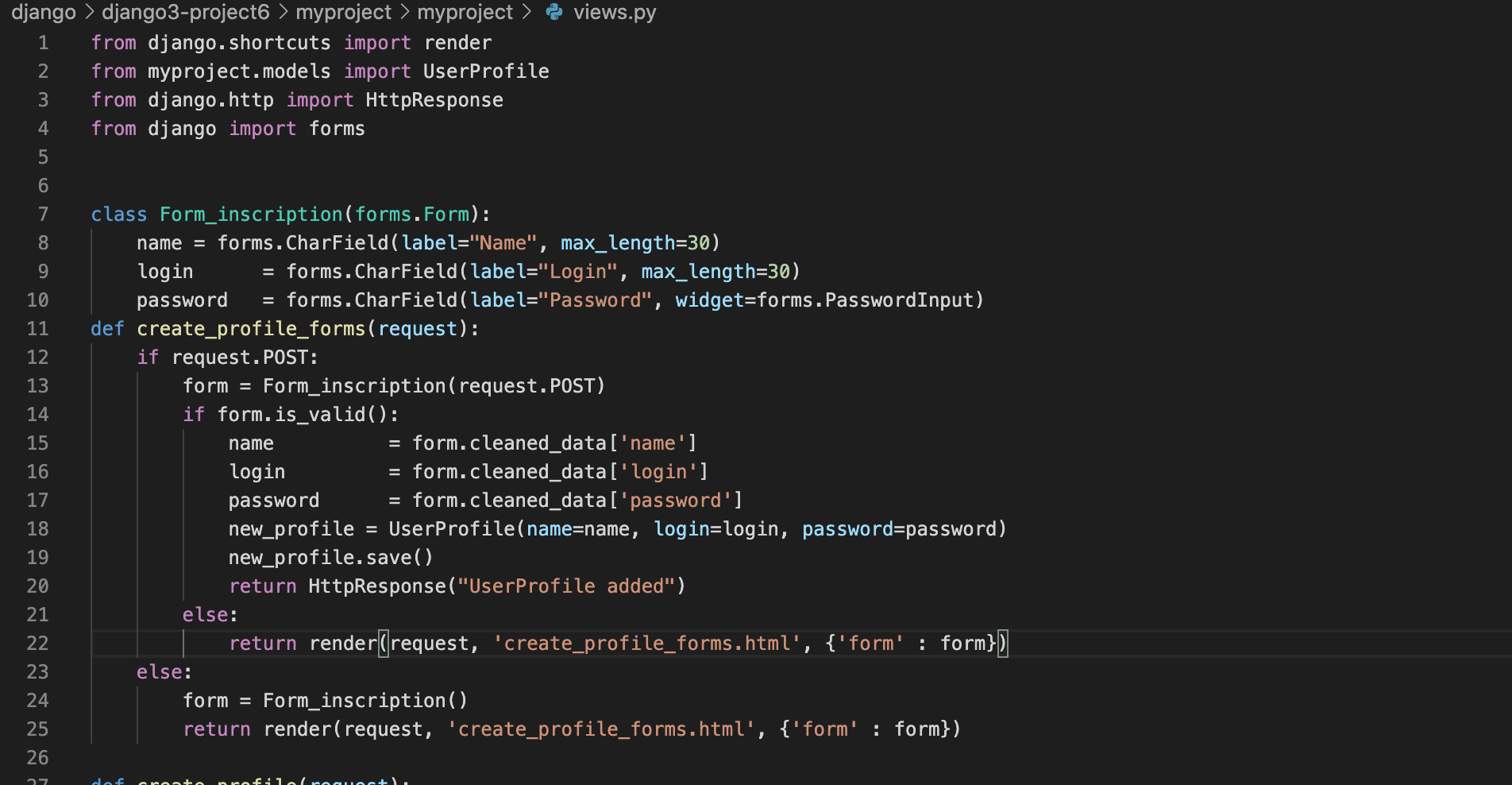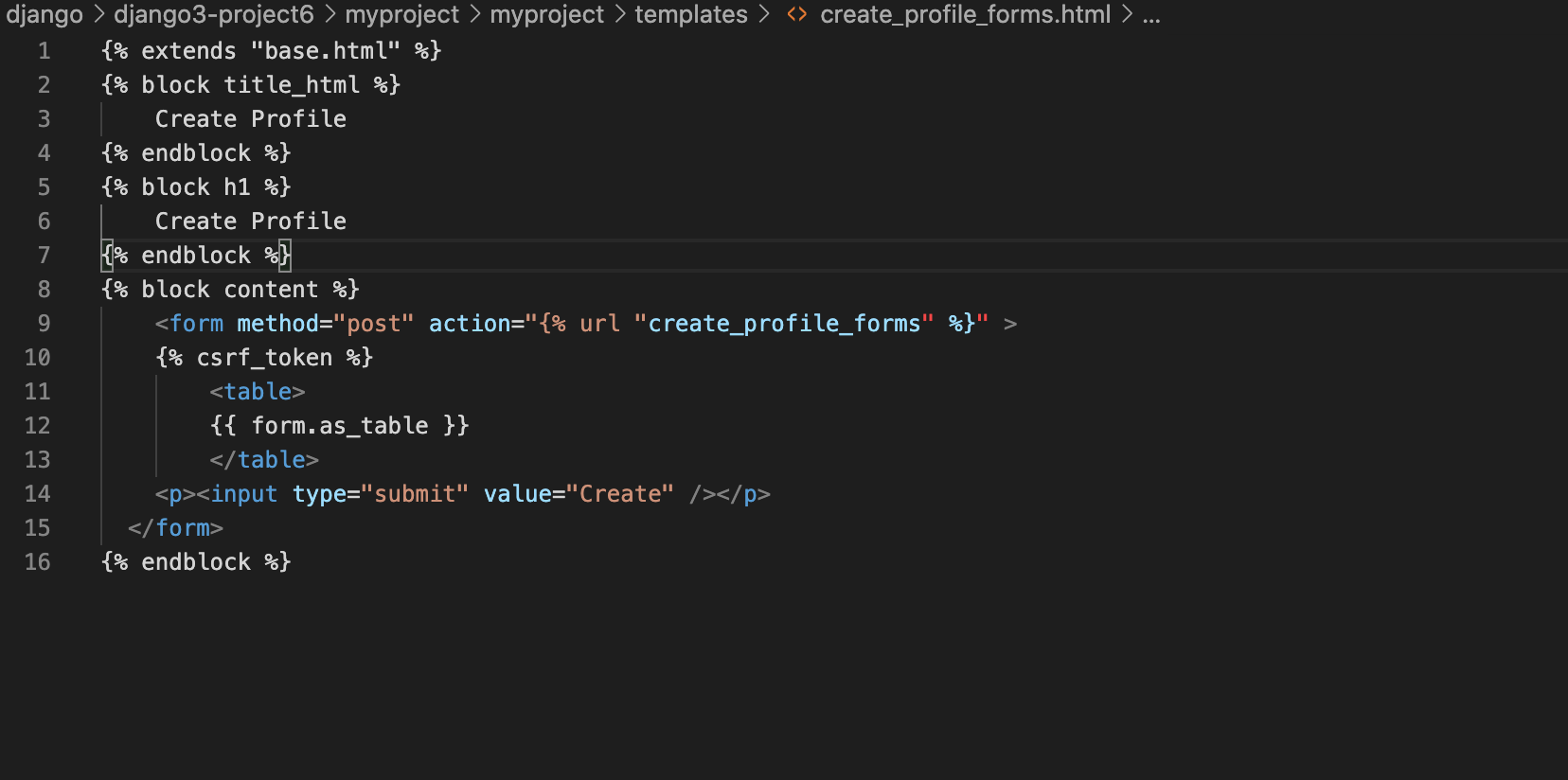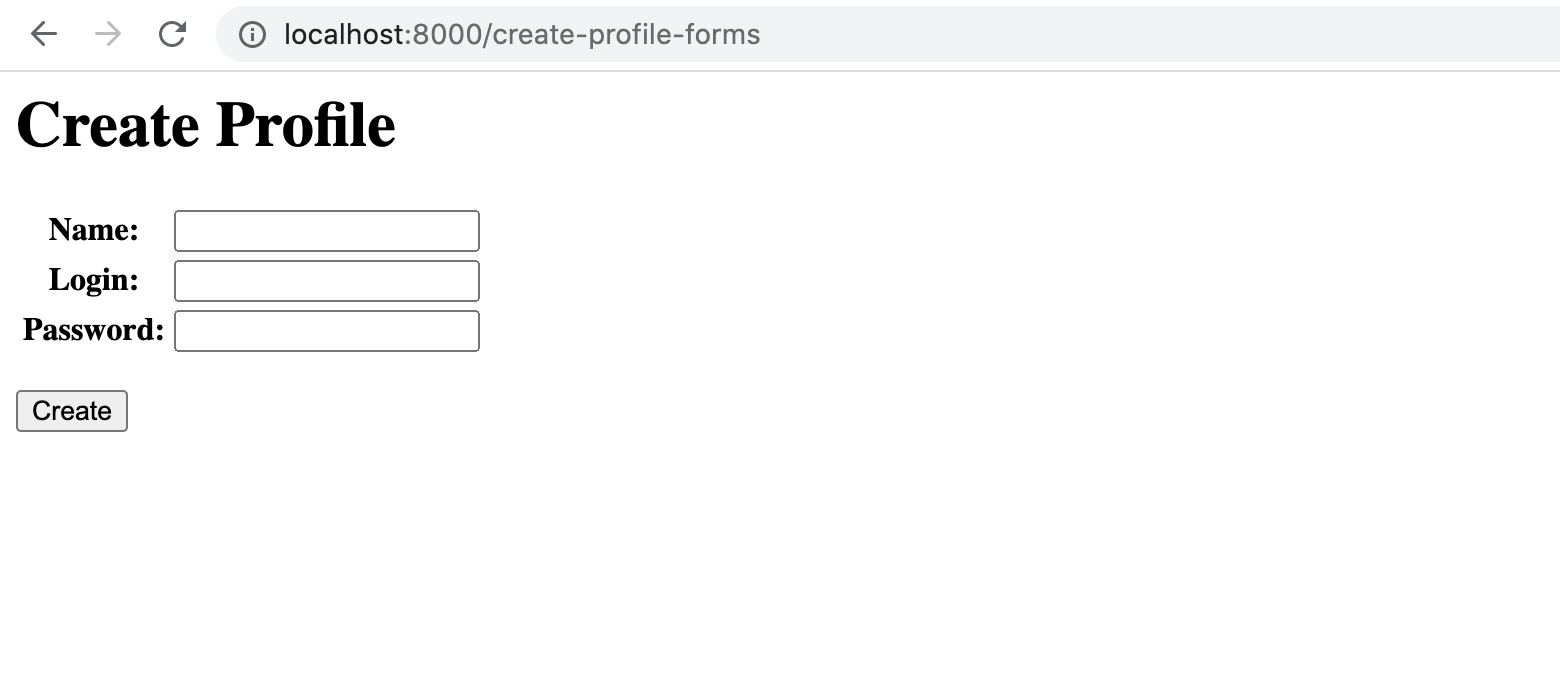Django forms work with an object that inherits from the Form class. This object will handle much of the work we have done manually in the previous post.
Step 1 : Add the following URL to your urls.py file:

Step 2 : We will create our view in the views.py file with the following lines:

Step 3 : We set the template for this view. The template will be much shorter. The following is our template in template/create_profile_forms.html

Step 4 : Now start the development server with the python manage.py runserver command and open http://127.0.0.1:8000/create-profile-forms in your browser.
